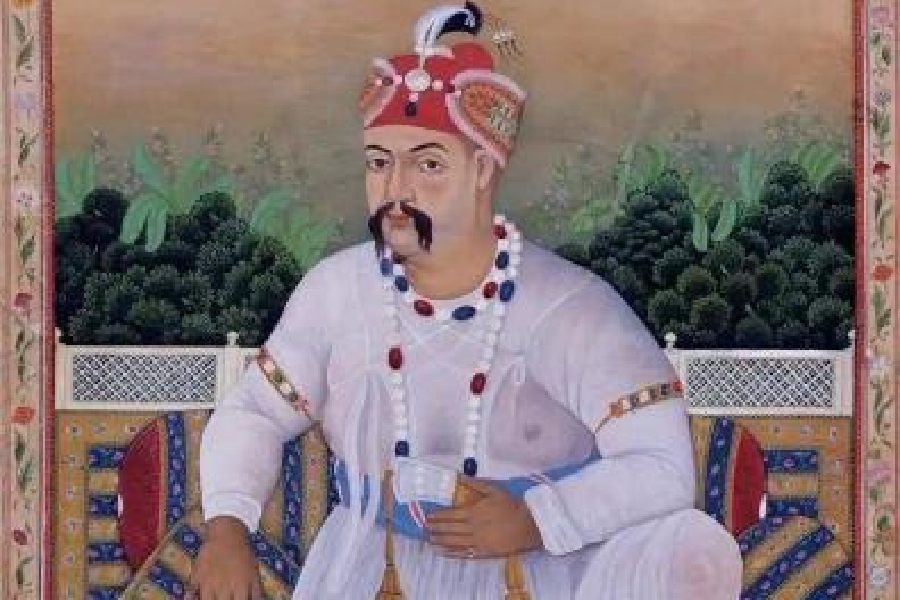Book: The Lion and The Lily
Author: Ira Mukhoty
Published by: Aleph
Price: Rs 999
Most of the readers of The Telegraph were probably introduced to the cultural elegance of Awadh of the nineteenth century by Satyajit Ray’s Shatranj ke Khilari (1977). Adapted from a short story by Munshi Premchand, the film depicts Wajid Ali Shah’s Lucknow, which was trying to hide its lack of strength of character in a charade of illusory splendour. Ira Mukhoty’s splendidly written The Lion and the Lily raises a few questions about this common sense that often treats the history of Awadh as a cultural artefact in its own right.
This book is a work of narrative history, a genre which, unfortunately, does not interest professional historians anymore. Mukhoty is a seasoned practitioner of the craft of historical storytelling as evinced in her earlier works, most notably in Daughters of the Sun: Empresses, Queens and Begums of the Mughal Empire (2018). Like in her other works, she has populated the narrative of the “Rise and Fall of Awadh” (subtitle of the book) with characters who are less acknowledged as the agents of transformation; for example, the begums who were so resourceful that Warren Hastings had to resort to deplorable means to usurp their wealth and power. This ultimately led to his impeachment by the British Parliament. By focusing heavily on an archive that is rarely consulted by the Anglophile historiography of the eighteenth century — the writings of the French officials, travellers, chancers and the lovers of art — she manages to weave a tale that does not necessarily contradict the chronology of events but challenges the conclusions that the British historians and their Indian acolytes are often prone to make.
One such conclusion was about the inefficacy of Asaf-ud-Daula who was crowned after the untimely death of his celebrated father, Shuja-ud-Daula, in 1775. Contemporary and later historians held forth that Asaf-ud-Daula was incompetent, immoral and involved in promiscuities that the morals of the time did not approve. What they often missed was his complicated relationship with his mother and grandmother and his zeal for turning Lucknow into one of the most beautiful and coveted cities in South Asia after he shifted the capital from Faizabad to mostly avoid the women in the family.
Mukhoty is also successful in recovering the history of Lucknow and its residents from the glum shadow of Wajid Ali Shah’s tragic departure that coloured almost every subsequent narrative, including Premchand’s and Ray’s. The Faizabad and Lucknow of
Mukhoty’s book are resplendent in their cultural and architectural ingenuity and energised by Awadh’s centrality in the political machinations of the day. This also allowed her to date the moments of Awadh’s fall slightly differently from the usual commentaries. The ascension of Saadat Ali Khan, Asaf’s stepbrother, with the help of the British in 1798, sealed the destiny of Awadh as the East India Company would now have more control over its land and politics which would ultimately result in Wajid Ali’s dethroning on the inaccurate charge of misadministration in 1856.
There are a couple of structural issues with the book which need to be mentioned. In a detailed work such as this, the unity of the narrative often gets compromised by the excitement of introducing new characters and themes that are neglected by the existing scholarship. The book has a long cast of characters and a comprehensive chronology in the beginning to help the readers but one loses track when the events are juxtaposed with the descriptions of individual careers, ambitions and eccentricities every so often. The other issue is the strange and unhelpful method of citation followed throughout the book where the long quotes from various primary sources are pushed to the end only with page numbers from the text. The readers may find it tedious to move back and forth without the usual aid of numbered references. Hopefully, it will be amended in the future editions of this remarkably researched book that will please both the uninitiated and the experts alike.











